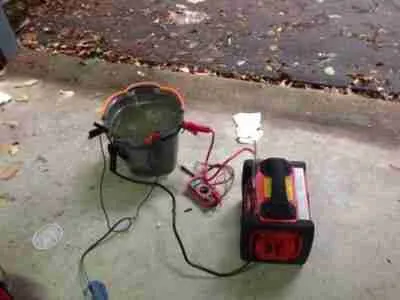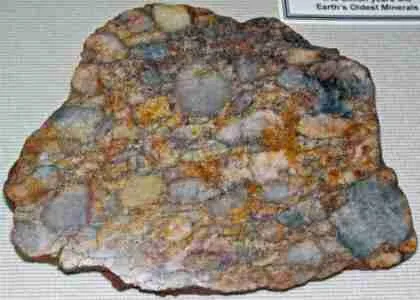Industrial Uses of Tetraoxosulphate(VI) Acid

Tetraoxosulphate(VI) acid, otherwise known as sulphuric acid has found several uses in the industries such as chemical, iron and steel and petrochemical. Below is a list of some of its uses
(i) Tetraoxosulphate(VI) acid is used for making cellulose film, artificial and natural fabrics and plastics.
(ii) This mineral acid is used to remove waxes, gums and several other dark coloring compounds during petroleum refining
(iii)Tetraoxosulphate(VI) acid is used as an electrolyte in lead accumulators and batteries. It is also used as an electrolyte in the refining and purification of metals by electrolysis.
(iv) This acid has found use as an acidifier in some industrial processes where a mineral acid is needed because it is relatively cheaper compared to other mineral acids.
(v) This inorganic acid is used as a dehydrating agent in the nitration of compounds used in the making of explosives.
(vi) Tetraoxosulphate(VI) acid is used in the purification of crude oil and in the manufacture of artificial silk.
(vii) Tetraoxosulphate(VI) acid is used in the manufacture of fertilizers such as calcium hydrogentetraoxosulphate(V) and ammonium tetraoxosulphate(VI)
(viii) This acid is used as a drying agent for very many gases except the alkaline gases such as ammonia and reducing gases such as hydrogen sulphide. Teraoxosulphate(VI) acid is also used in desiccators as drying agents.
(ix) Tetraoxosulphate(VI) acid is used in the manufacture of pigments such as barium tetraoxosulphate(VI) and titanium(IV) oxide that are chemical component of paints and dyes.
Let us now take a closer look at this mineral acid
Tetraoxosulphate(VI) Acid – Industrial Preparation, Reactions And Uses
Tetraoxosulphate(vi) acid is one of the most important chemical compounds known. It is used in almost every manufacturing process. It is prepared industrially by the contact process.
Concentrated H2SO4 is corrosive and causes burns if comes into contact with skin. It oxidizes metals and non-metals. It is also moisture sensitive.
TETRAOXOSULPHATE(VI) ACID: INDUSTRIAL PREPARATION, REACTIONS AND USES
Almost all manufacturers use this chemical directly or indirectly at some stage. It is prepared industrially by the Contact process. The sulphur(IV) oxide formed is passed through an electric chamber to remove impurities that might poison the catalyst, and then through H2SO4 to dry it. The sulphur oxide then reacts with oxygen in the presence of pellets of catalyst like vanadium (V) oxide, V2O5, to form sulphur (VI) oxide. The sulphur (VI) oxide is cooled and dissolved in concentrated H2SO4 to produce a thick liquid called Oleum. The Oleum is then diluted with water appropriately to produce 98% tetraoxosulphate(VI) acid often used in the laboratory.
This acid is a strong oxidising agent and it acts strongly on many metals. It is also a good dehydrating agent, that is it removes water molecules from many compounds. It is a major ingredient of the sulphur(VI) salts used in making fertilizers, ammonium tetraoxosulphate(VI), NH4SO4, and superphosphates. It is also used as a bleaching agent for wool, silk and sponges during paper making and is employed as a germicide and a fumigant to destroy termites and moulds.
Tetraoxosulphate(VI) is also used in the manufacture of dyes and pigments for paints. It is also a good solvent for oils and fats and is used to make soap. It is also used to clean metals before electroplating, as an electrolyte in lead-acid storage batteries, and as a drying agent for gases including nitrogen. Calcium tetraoxosulphate(VI) forms plaster of Paris which is used to set broken bones. Iron II tetraoxosulphate(VI) has an important medical role as an anti-sickling agent. It is also a good disinfectant and is used as an enema to treat certain types of diarrhoea. It is also useful in preparing cyanide and other organic compounds like nitric acid and carboxylic acids. It is also a useful chemical in metallurgy for making aluminium and other metals. Sulphur is the most abundant element in Earth’s crust and it is mined from the ground as gypsum. When heated it forms the well-known mineral, plaster of Paris which is used to set broken bone.
Additional Notes on the Uses of Tetraoxosulphate(vi) acid
The chemical formula for tetraoxosulphate(vi) acid is H2SO4. This shows that in each molecule of this compound there are two atoms of hydrogen, one atom of sulphur and four atoms of oxygen.
In the industrial processes, this compound is used in the preparation of various insoluble salts containing metals such as zinc, aluminium and iron.
It is also used in the purification of crude oil.
In addition, it is used as an oxidizing agent to prepare trichloromethane and tetrachloromethane (both used for producing polychloroethene).
Chemical Reactions of Tetraoxosulphate(vi) acid
When concentrated H2SO4 is exposed to air it reacts violently with metals to form sulphur trioxide and sulphur dioxide. In the presence of water it reacts with metal oxides to produce a variety of salts. The reaction with metal oxides is exothermic, and the heat evolved causes the acid to boil to produce a mist of fine droplets that are spread over the surrounding area. These acids are corrosive and can cause severe acid burns.
Concentrated H2SO4 is a strong oxidizing agent, and it can be used to make tetraoxosulphate(vi) salts by reaction with alkalis. This is the main method for preparing these compounds in industry. However, this method is difficult and time consuming. In order to speed up the process, a suitable solvent such as methyl chloride is required.
Sodium tetraoxosulphate(vi) is used in the manufacture of fertilisers and pesticides.
It is also used to etch steel before plating. In addition, it is used to dehydrate some substances such as rust and sugar. Consequently, it is an important laboratory reagent and an essential chemical for many other uses.
Test for Tetraoxosulphate(vi) Acid
In the laboratory, it is useful as a test for any soluble salts that might be present in a substance suspected of being trioxosulphate(vi) acid. A solution of barium chloride, acidified with dilute HCl is added to the solution and if a white precipitate is formed that is insoluble in excess of dilute hydrochloric acid then this confirms that there is a tetraoxosulphate(vi) ion present. This is a good test for any metals that might be present in the sample, such as lead or zinc.
Reactions of Tetraoxosulphate(vi) Acid
Acids are a group of chemical elements that form different types of solutions. Each compound has its own unique chemical formula. A chemical formula consists of two or more symbols that represent the atoms found in each molecule of the compound. There are several types of acid, some examples include hydrochloric, sulphuric and phosphoric acids. In order to make a solution of an acid, it must be added to water. This process is called hydrolysis. When hydrolysis takes place, the water molecules break down to produce the acid and sulphate ions. A solution of an acid can also be made by mixing the substance with another compound, known as neutralization.
Inorganic acids are acids that are not produced by living organisms. These are also referred to as mineral acids. Inorganic acids are produced from mineral elements, such as sulphur, oxygen and nitrogen. These acids are widely used in industry and are also commonly found in nature. Some examples of inorganic acids are sulphur dioxide, nitric acid and tetraoxosulphate (VI) acid.
Tetraoxosulphate(VI) acid is a toxic gas that is used in industrial processes. It reacts with metal oxides to form sulphur (VI) salts. It is also used as a drying agent. It is important to note that any substance that is hygroscopic will absorb water and will decrease in volume. The compound should not be mixed with another substance that is hygroscopic or it may react with the other material and precipitate.
Sulphur(VI) oxide does not dissolve directly in water to produce tetraoxosulfate(VI) Acid because it would give off too much heat. It is dissolved in the Contact Process, which is a common method of producing the compound.
The dried gaseous mixture is then fed into a contact tower (reaction chamber). Here the sulphur(VI) oxide and oxygen combine in the presence of pellets of the catalyst, vanadium(V) oxide, V2O5. This reaction takes place at atmospheric pressure and temperature of 450-500oC. The sulphur (VI) oxide is then cooled and dissolved in concentrated H2SO4 to produce a thick liquid known as Oleum, which is then diluted with water appropriately to yield 98% tetraoxosulfate(VI) acids.
Electronic Bonds
Tetraoxosulphonate(VI) acid can form a wide variety of complexes with metals. These can contain either one oxygen atom as the ligand (monodentate) or two oxygens as the ligands. They can also be bridged by sulphur or nitrogen. The structure of the complex is determined by the number and type of ligands and the size of the ligand orbitals.
The sulphate ions are strongly attracted to metals, especially magnesium, aluminium, and zinc. The sulfate is also capable of forming strong covalent bonds with them. This is important for a range of applications, including the manufacture of glass and some plastics. It is used in the manufacture of gypsum and some fertilisers, and in cleaning iron and steel before plating with tin or zinc. It is also employed as an electrolyte in lead-acid storage batteries.
Hydrogen sulphide is found in volcanic gases, sulphur springs, and coal gas. It is a colourless gas with a distinctive smell like that of rotten eggs and is 1.18 times denser than air. It is moderately soluble in water to form a very weak acidic solution and burns with a pale blue flame. It is a useful test for the presence of sulphur in gasses. It can be detected by placing a piece of filter paper moistened with lead(II) trioxonitrate(V) solution into a gas jar filled with the unknown gas. If the paper turns black, hydrogen sulphide is present.
It is extracted from sulphur by the Frasch process using three concentric sulphur pumps driven down a hole dug to the sulphur deposit. The solid sulphur is then melted in a furnace at 115oC and forced out by super – heated water at 170oC and 10atms. The sulphur then crystallizes in a tank.
It reacts with oxygen in the air to make sulphur(IV) oxide and water, or in the presence of a catalyst like vanadium (V) oxide or plated asbestos to produce tetraoxosulphate(VI) acid. It is also employed as a germicide and a fumigant example: for destroying termites, moulds and bacteria and as a preservative in some liquids eg orange juice.


